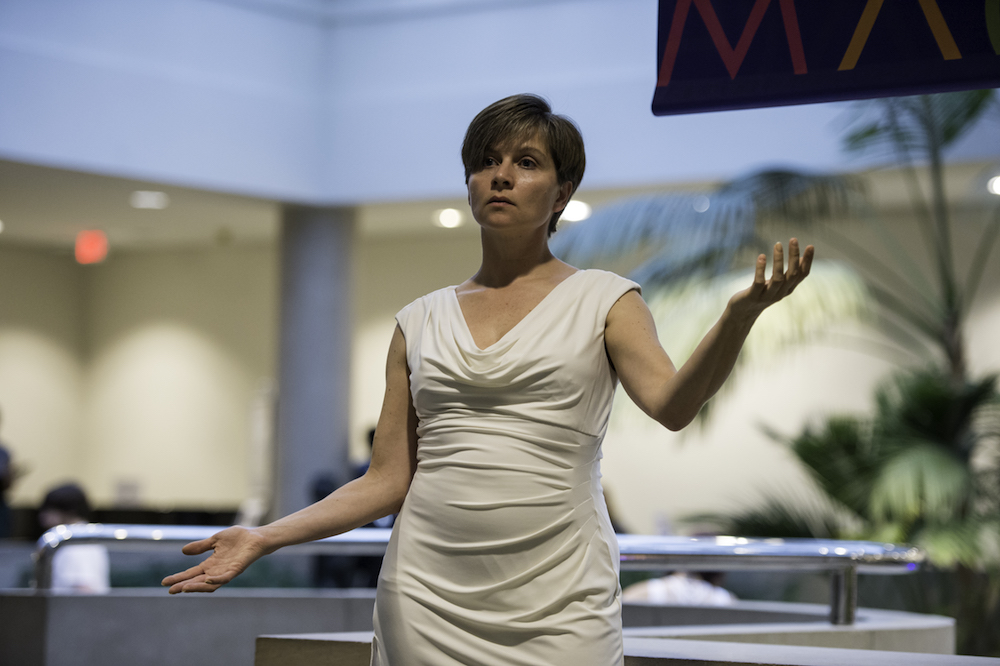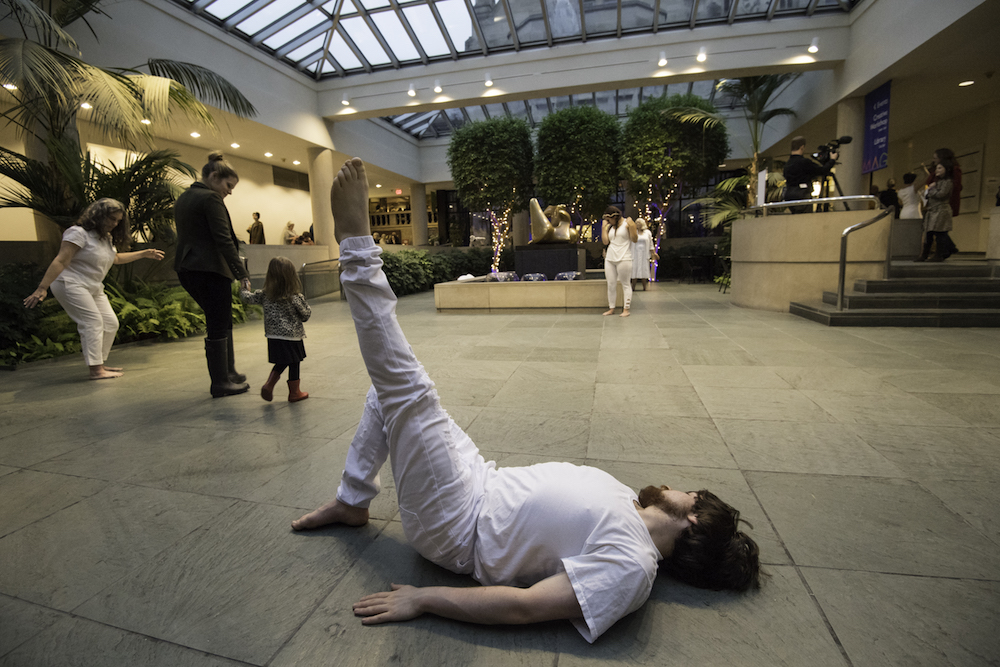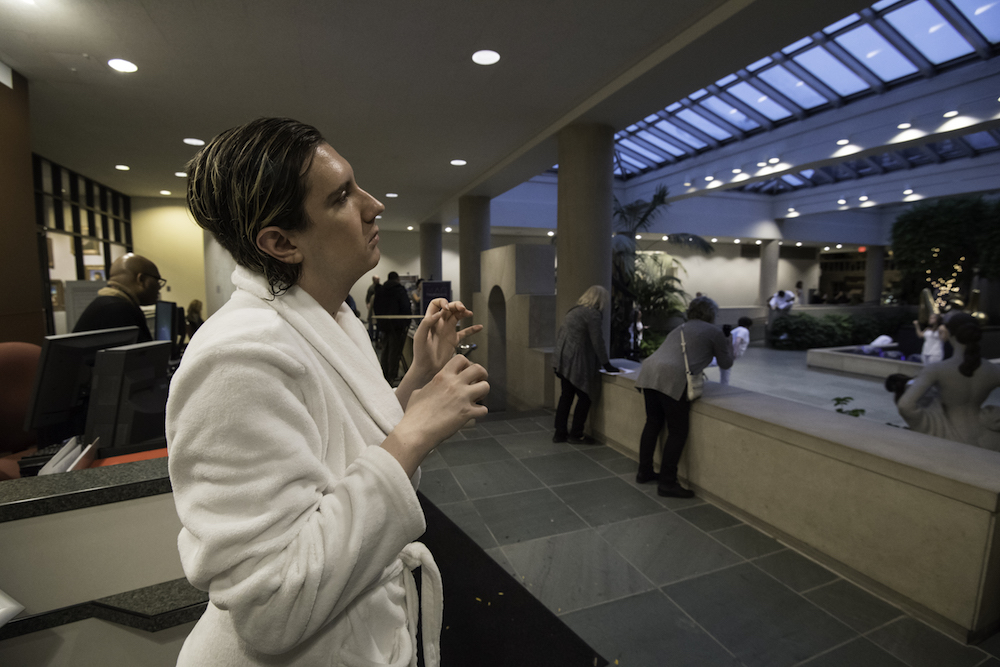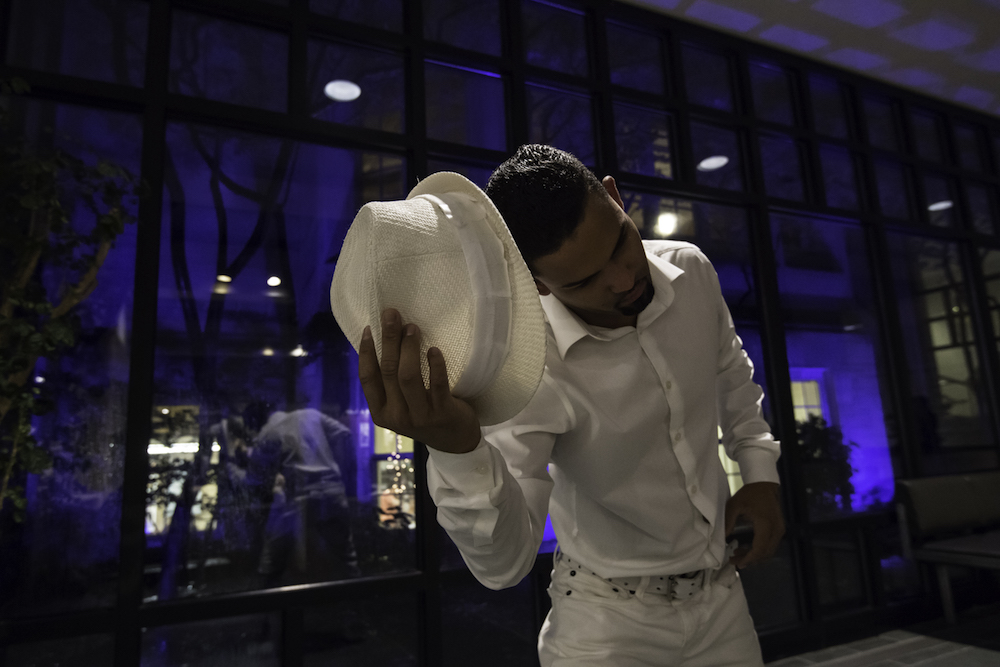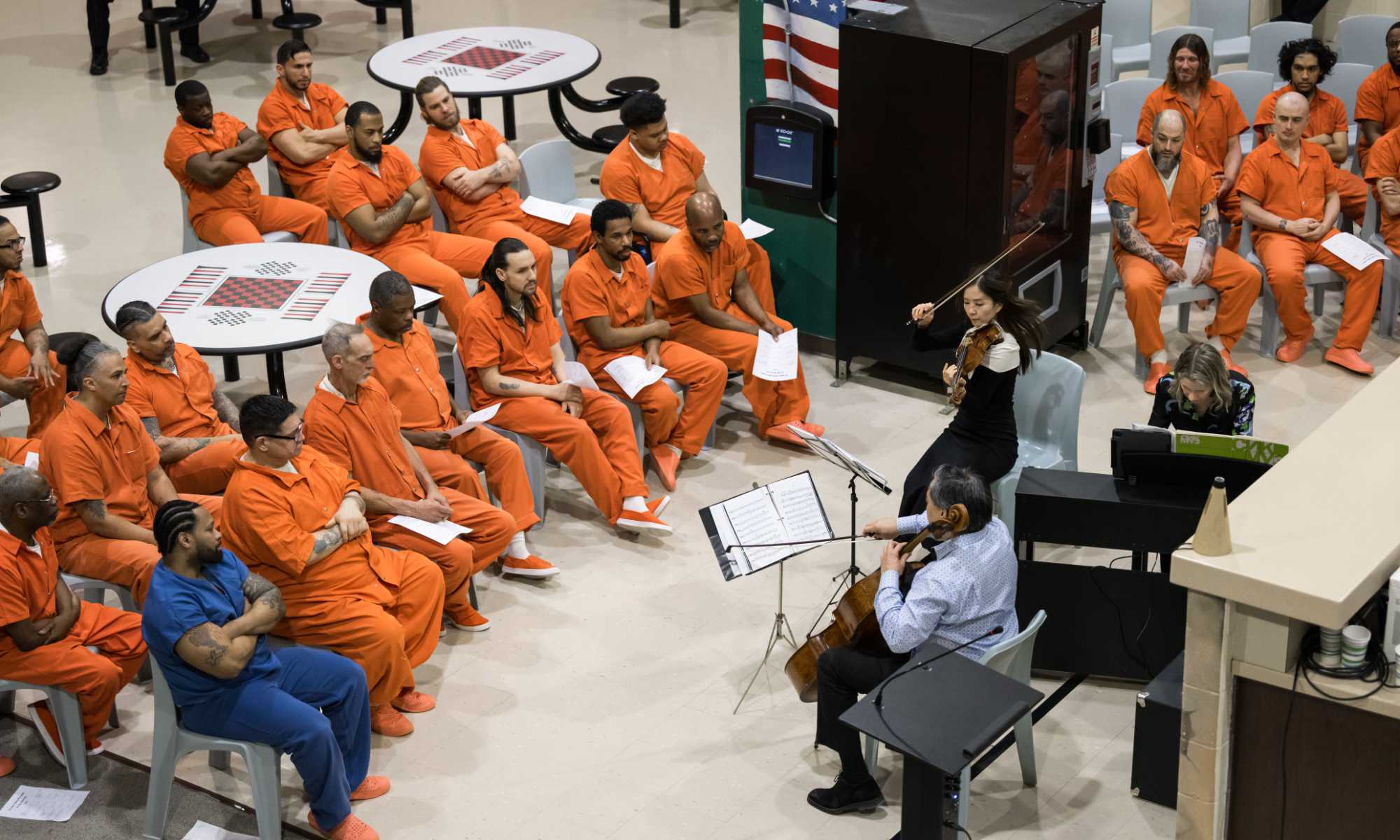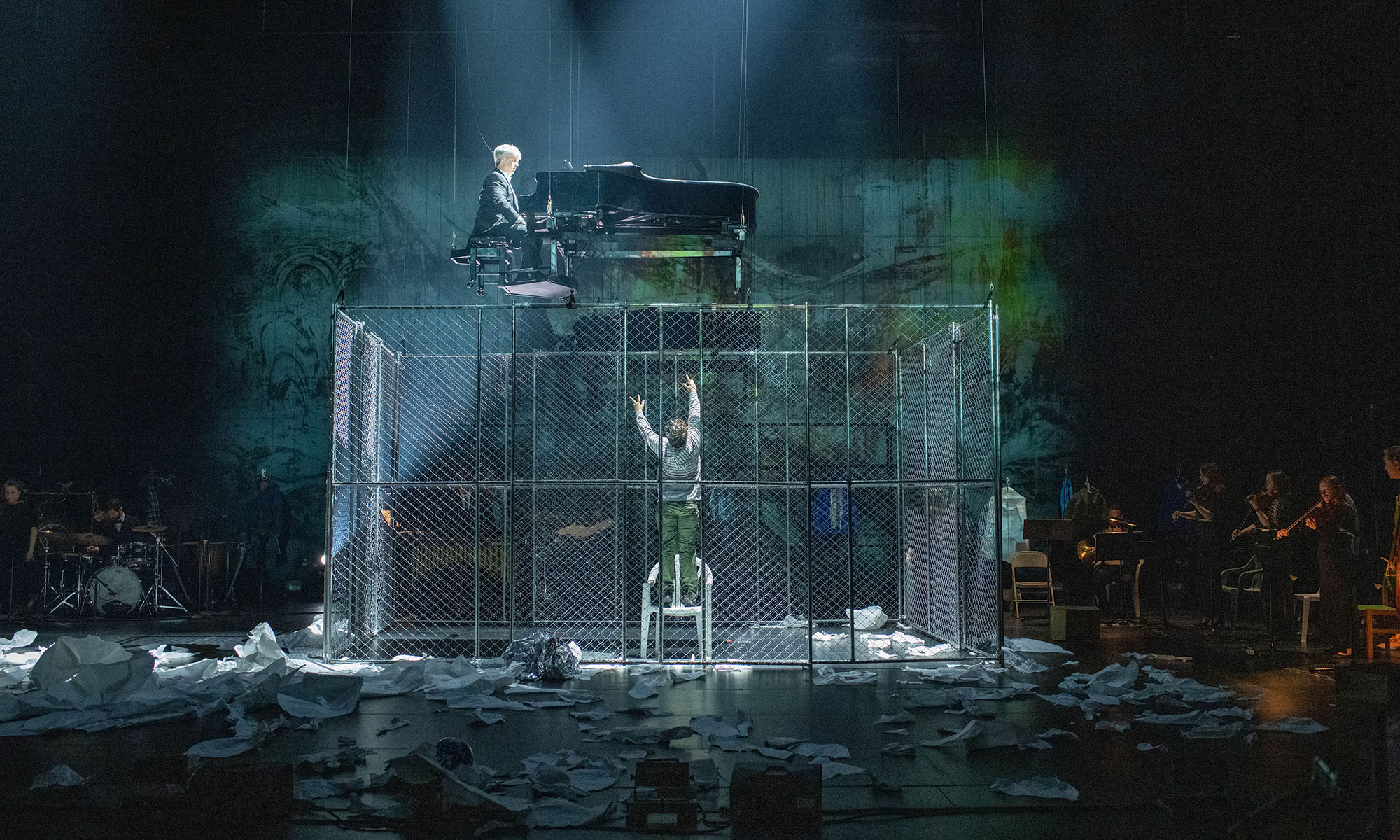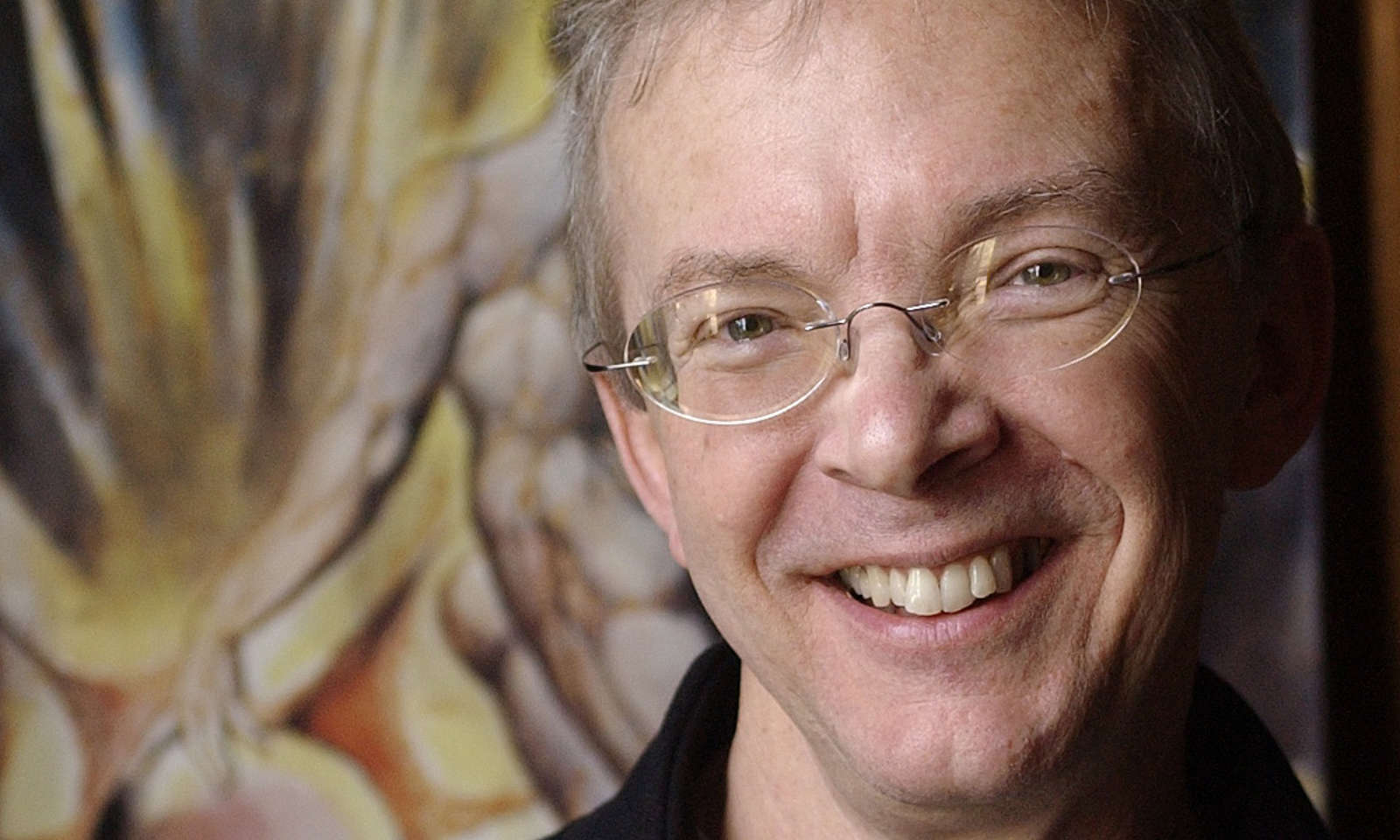See On Display at the Medical Center
Another installation of On Display/Rochester is planned from 2 to 3 p.m. Saturday, December 3— the International Day of Persons with Disabilities.
The performance is part of the Disability Studies Cluster’s (DiSC) annual conference in Helen Wood Hall. This year’s theme is “It Takes A Village: Disability, Interdependence, and Empowerment.” On Display will be presented in the building’s atrium.
The Memorial Art Gallery atrium is filled with the ambient static of its fountains as nearly a dozen people—physically different in many ways but alike in their all-white attire—file in one by one and fan out through the large space.
Arms raised in a “v” to start, the performers change positions gradually before finding a pose to hold momentarily. Their movements are slow, but purposeful. They close their eyes as they move. The audience is invited to look, take photos, and share them on social media with the hashtag #OnDisplay.
On Display is a “deconstructed art exhibit” that showcases a diverse range of bodies and addresses our tendency to judge people if they look different than ourselves. The project was conceived by New York City–based choreographer Heidi Latsky, who has been connected with the University’s Program of Dance and Movement for years. Latsky is an advocate for disability rights and her company often focuses on themes of redefining beauty and inclusivity. On Display has been performed around the country and around the world and premiered at the Memorial Art Gallery on October 20 and 23.
“On Display is not just about disability, it’s about inclusivity,” says Missy Pfohl Smith, director of the Program of Dance and Movement, who helped organize the Rochester performances. “It’s about anybody—any race, any gender preference, any gender identity.”
“There’s beauty in inclusivity,” she says, adding that she hopes that by watching On Display, the audience realizes that beauty is not narrowly defined.
Diana Kelly co-coordinated the Rochester performances with Smith. Kelly and her 22-year-old son, Austen, participated in Latsky’s production of On Display in Boston and they were inspired to help bring the project to Rochester. Austen, who has autism, has been dancing since he was eight.
“On Display is about the performers being able to express themselves, but it’s also about the audience which is don’t look away,” says Kelly. “Look for the beauty. It’s as much saying we are a part of the world along with you. We deserve the same opportunities, the same consideration, the same. We are capable of the same feeling.”’
Alex White ’17 says performing in On Display empowers them.
“The piece, I understand, is largely about disability and the ways in which bodies are put on display and I kind of experience that from a different way,” White says. “Being transgender I also feel as if my body’s on display and there are certain ways that I perform my gender correctly or incorrectly.”
Performing in the installation “puts me in control and gives me the power; whereas typically I’m the person who is being judged, who is being objectified.” White adds. “It allows me to experience a different perspective—and that is, in itself, very empowering.”
On Display: A human sculpture gallery
